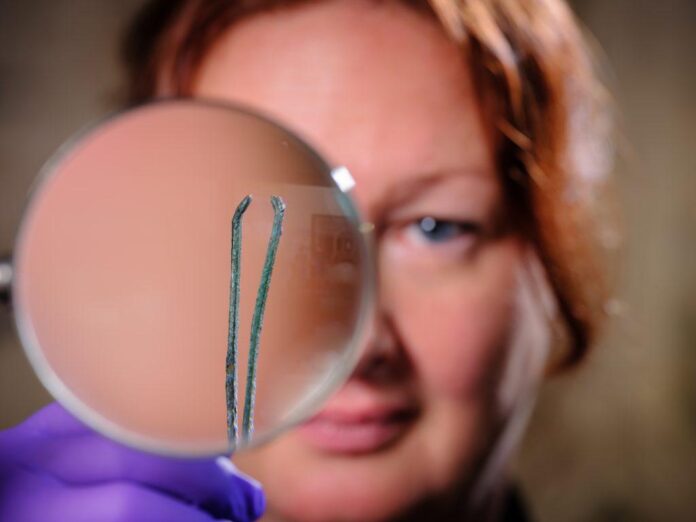“Beauty is pain” was a maxim the Ancient Romans lived by. During near daily trips to communal bathhouses, Romans paid to have their skin scraped, ears scooped out, and body hair plucked. The suppression of body hair was a particular obsession and became an enduring beauty standard, one Romans saw as an important mark of difference between themselves and barbarians.
At the recently overhauled museum at Wroxeter Roman City, in Shropshire, U.K., a new display of more than 400 artifacts presents various items that attest to such fastidiousness in the departments of health and beauty. This includes strigils, perfume bottles, copper cosmetic sets, and, yes, tweezers for hair removal.
“At Wroxeter alone we have discovered over 50 pairs of tweezers, one of the largest collections of this item in Britain,” Cameron Moffett, English Heritage Curator at Wroxeter Roman City, said in a statement. “The advantage of the tweezer was that it was safe, simple and cheap, but unfortunately not pain free.”

A reconstruction of a Roman cleaning set, including a strigil, oil bottle, nail cleaner and tweezers. Courtesy of English Heritage.
The copious number of tweezers found onsite is something of a testament to the scale and prosperity of Wroxeter, or Viriconium Cornoviorum as it was known in Latin. Founded as a provincial fortress in the middle of the first century, it went on to become the fourth largest town in Roman Britain with a peak population of 15,000, roughly the same size as Pompeii. Irrespective of the distance from Rome, the inhabitants of Wroxeter were loyal to the aesthetic customs of the empire’s capital.
In a message announcing the museum opening last month, English Heritage, which operates the site, claims the modern obsession with hair removal can be traced back to the Romans. Poets including Pliny and Ovid wrote on the necessity that women remove body hair in order to be attractive. But whereas today’s peculiar fixation with hairlessness falls overwhelming on women, it applied to both sexes in Roman times. Aside from maintaining a clean-shaven appearance, it was expected that men remove body hair before engaging in physical activities, such as wrestling.

A reconstruction of Wroxeter. Courtesy of English Heritage.
The presence of male hair plucking (and the noises it produced) at public baths was so common that it grated on people. Notably, the 4th century BCE philosopher Seneca wrote to a friend that the “the skinny armpit hair-plucker whose cries are shrill, so as to draw people’s attention, and never stop, except when he is doing his job and making someone else shriek for him.”
Wroxeter is one of the best-preserved Roman towns in Britain. The range of structures archeologists have excavated include the town’s forum, market, bathhouse, and a townhouse that has been reconstructed. Other highlights on display at the new museum are a Roman water pipe, restrung necklaces, glass bottles, and phallus-shaped amulets.
See more images from Wroxeter below:

A reconstructed Roman necklace with an amulet of a breast at its centre, thought to be related to women’s health. Courtesy of English Heritage.

Wroxeter was once the fourth biggest Roman settlements in England. Courtesy of English Heritage.

A conservator examines a collection of Roman tweezers used to remove armpit hair from Roman men and women at Wroxeter. Courtesy of English Heritage.
More Trending Stories:
The Art Angle Podcast: James Murdoch on His Vision for Art Basel and the Future of Culture
A Sculpture Depicting King Tut as a Black Man Is Sparking International Outrage

























